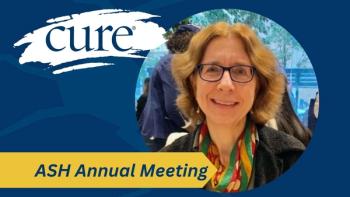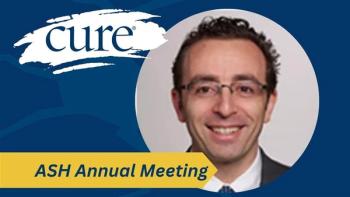
What Does It Mean When Multiple Myeloma Becomes Relapsed/Refractory?
Transcription: Colleen Moretti: What is relapsed/refractory multiple myeloma? How does it differ from typical disease?
Dr. Saad Usmani: Relapsed and/or refractory myeloma is myeloma that has come back after patients have received their initial therapy at the time of diagnosis. Typically when patients are diagnosed, they get three or four drug combinations as part of induction. For eligible patients who can get a stem cell transplant they move on to stem cell transplant. But after induction and/or transplant have reduced the amount of myeloma or disease burden, then patients go on to maintenance treatment. And so that's the typical first line approach.
And then if the myeloma comes back that's when it's called relapsed myeloma. If the patients have been off of treatment for more than 60 days and if the myeloma comes back, or after a certain duration of time after having discontinued treatment beyond those 60 days, it's called relapsed myeloma. However, if the myeloma comes back while they're on active treatment, or within 60 days of stopping treatment for whatever reason, then it's called relapsed refractory multiple myeloma. So it's really a function of where they are in their treatment journey, and whether they're on active treatment or not. Because the important thing is recognizing these entities so that we can come up with the best treatment options for patients when it's time for them to change treatments.
Moretti: What are the treatment options for patients who have relapsed and/or refractory multiple myeloma?
Usmani: We have several different types of therapies available at our disposal. We have immunomodulatory drugs, which typically come in the form of pills. We have steroids, which can be given as pills or in the intravenous. We have proteasome inhibitors like Velcade (bortezomib) and Kyprolis (carfilzomib). (Velcade) can be given under the skin as well as IV but, under the skin is what is preferred because it gives the least amount of side effects. (Kyprolis) is typically given as an IV infusion. And then we have antibodies, like Darzalex (daratumumab), Sarclisa (isatuximab), Empliciti (elotuzumab) that are available for patients.
Then we now have bi- specific antibody Tecvayli (teclisttamab), that's approved for relapsed refractory myeloma as well as CAR-T cell therapies. So, there are two CAR-T cell therapies Abecma (idecabtagene vicleucel) and Carvytki (cilta-cel) and they are available. And then we also have stem cell transplantation as a therapy for our patients. We also have some oral treatments like psycho cyclophosphamide and melphalan, so some old fashioned chemotherapy drugs at our disposal as well. And there are many clinical trials looking at different options for our patients in the relapsed refractory space in addition to all of these different therapies.
Moretti: Are there other risk factors that can play a role when treating relapsed and/or refractory multiple myeloma?
Usmani: Certainly. We look at the patients for comorbidities and performance status, of course, as well as the kinds of treatments they receive, the kinds of responses they've had, and the side effects they've endured because of those treatments. We also look at organ function for patients, how much of an influence the disease and the sequence have had on organ function. And then from a disease perspective, we look at how much myeloma we're dealing with and what kind. Are there any aggressive features like circulating plasma cells, has the myeloma started to go to sites other than bone — sometimes it can go to lymph nodes or to other areas and we pay attention to that, or whether there are any circulating myeloma cells in the bloodstream. So, we take all of that information and try to come up with the best game plan for our patients and try to provide as much information to them as possible about their options.
Moretti: What is important for patients to know if their multiple myeloma has become relapsed or refractory?
Usmani: The first and foremost important thing is that you have to have measures — that there are options. And speaking to your physician and reaching out to a myeloma expert to help in the decision making is very reasonable. I think there are several options that can be employed, my advice to patients is always to consult with their physicians and their myeloma expert about their care and then make that decision. For the most part, patients are better prepared for this next go round because they are well educated about what to expect and know what to ask. And my advice is always not to be shy about asking, no questions are silly questions. And we want to empower our patients as much as we can.
This transcription has been edited for clarity.








